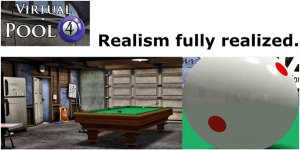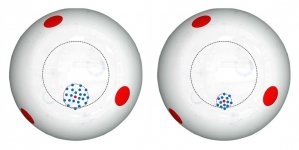The Coriolis method of aiming massé quickly tells you that the elevation must be about 60 degrees before the cue ball can even go out and stop.
I tried this on the VP4 simulator - it worked exactly as described: maximum draw at 60° made the CB scoot forward (an amount determined by force) and stop dead with no follow or draw.I.e., aiming with maximum draw at the CB's base (where it touches the table).
And the amount of speed = the distance it goes before stopping?
Fascinating stuff.
I'm always impressed with the accuracy and realism of VP4's physics and graphics.
pj
chgo


